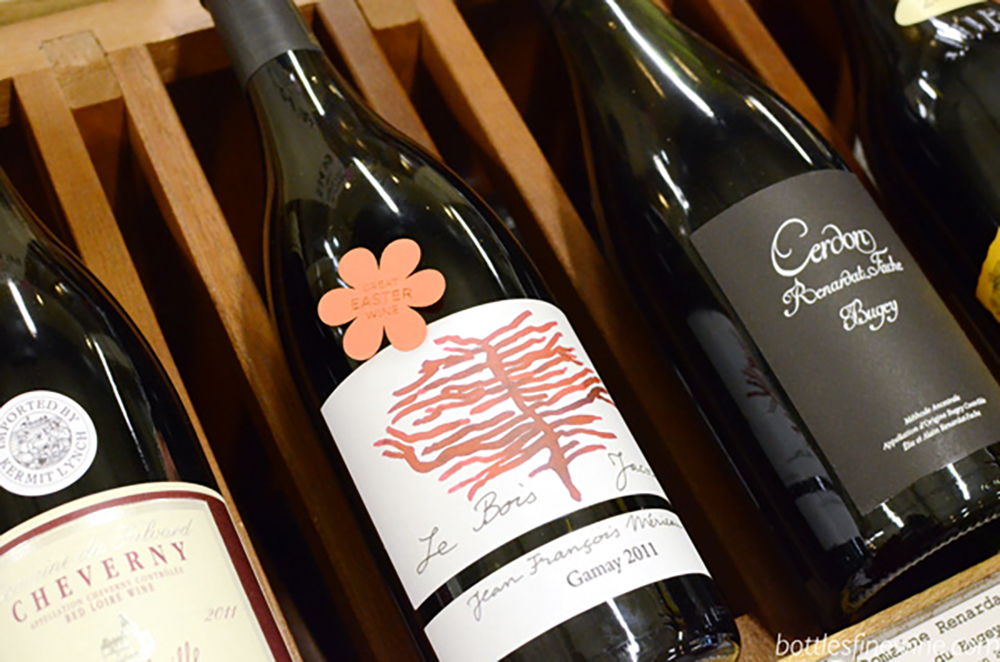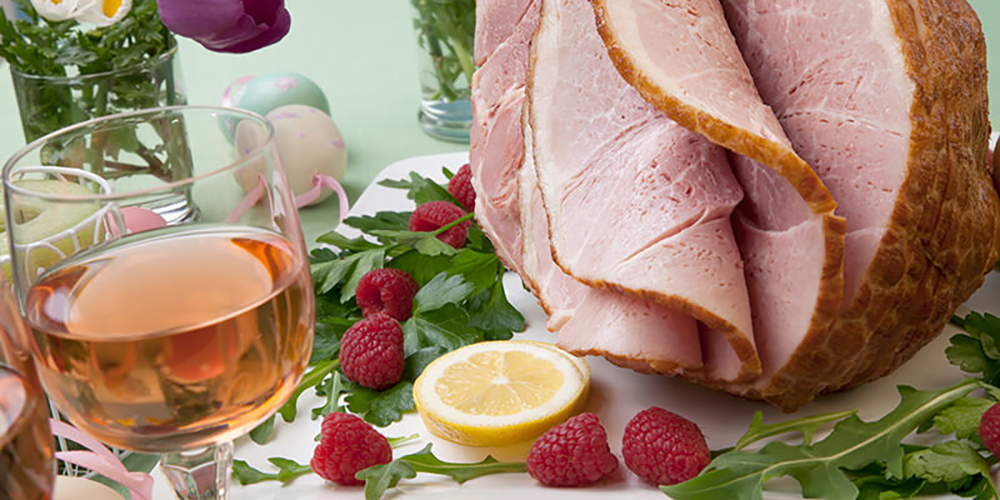By David Setley
Easter is right around the corner, and many of us are making dinner plans. Unlike Thanksgiving, in which turkey reigns supreme, there are a variety of options found on folks’ Easter menus, making wine pairings a bit more complicated. Let’s look at some of the foods that have become Easter traditions, alongside complementary wine recommendations.
Regardless of your menu, a welcome wine is always in good taste. A sparkling wine, such as Champagne, Prosecco, Cava, or Moscato d’Asti, is the perfect way to greet your dinner guests. Brilla Wine, from Northern Italy, has three wonderful sparkling wines that come in festive bottles to add pizzazz to your Easter table. On the drier side, the Brilla Prosecco Brut and the Prosecco Rosé are both certified Denominazione di Origine Controllata (DOC) wines from the Veneto wine region near Venice, Italy. If you prefer a slightly sweeter sparkling wine, try the Brilla Moscato from the Piedmont wine region. Any of these wines will delight your palate while the bottles delight your eyes.
My research indicated that ham appears to be the most popular protein for Easter dinner in America. Some families roast their ham with brown sugar, some use pineapple, some use fruit jelly, and some use honey mustard. I even know people in PA who use peanut butter to glaze their Easter ham – no kidding! Food.com has a recipe for this online if you’re interested. No matter the preparation, ham is a sweet meat that is best paired with a dry wine. Consider a Sauvignon Blanc, such as the Jean-Paul Picard & Fils Sancerre from the Loire Valley, or a Pinot Gris, like the A to Z Pinot Gris from Oregon. Or, if you prefer red, seek out a light to medium-bodied option.
Lamb, best described as “gamey,” is also a popular choice for Easter celebrations. The taste of lamb is generally robust with grassy flavors. Côtes du Rhône wines, from Southern France, are natural pairings to complement this protein. These wines are often referred to as a GSM blend, meaning a blend of Grenache, Syrah, and Mourvèdre grapes. Syrah wines can be described as gamey, making it a perfect wine to pair with lamb meat. The Domaine Brusset Laurent B-Côtes du Rhône is an excellent Old-World choice. If you prefer New-World, try the Australian Trizanne Syrah or Penfolds Koonunga Hill Shiraz.
Turkey is a frequent pick for Easter dinner. Though many believe that poultry pairs best with white wines, I believe the perfect pairing is a Gamay wine from Beaujolais, France. Beaujolais borders Burgundy, the home of Pinot Noir, and these grapes have many similarities; if you like Pinot Noir, you will likely enjoy Gamay. Gamay wines are light to medium-bodied red wines with an elevated acidity level that makes them perfect for turkey. The fruit flavors are cranberry, red raspberry, and cherry, and there is a slightly less dominant earthiness than you would find in Pinot Noir. The Jean Paul Dubost Moulin-A-Vent En Brenay is an outstanding Gamay wine, as is the L. Tramier & Fils Beaujolais-Villages.

In my research, I also discovered that salmon is often selected for the springtime holiday, especially by pescatarians. Like poultry, many consider white wine to be the natural pairing, though a red wine can work just as well, depending. If you are baking your salmon, I suggest a fuller-bodied white wine, such as the Novellum 100% Chardonnay from France or the Stags Leap Hands of Time Chardonnay from California. If you are grilling or pan-frying your salmon, consider the Lemelson Vineyards Thea’s Selection Pinot Noir, from the Willamette Valley of Oregon, or the Santa Maria La Palma Le Bombarde Cannonau from Sardinia, Italy. Cannonau is the most widely planted grape in Sardinia and is the varietal name that Sardinians use to refer to Grenache or Garnacha grapes. It is a great wine and, because it is relatively unknown, a great bargain.
For those of you I’ve spoken with personally, you likely know that my wife and I adopted a pescatarian diet a little over a year ago. We largely eat vegetarian at home but occasionally eat seafood when traveling or eating out. So, what do vegetarians eat for Easter? Whatever we want! Seriously, with the number of plant-based foods that have taste similarities to poultry, red meat, or even seafood, the options are limitless. Wine pairings are designed to complement flavors, not the specific meat. As such, vegetarians can easily follow the same recommendations as given above. For a specific veggie dish that coincides with the season, something with asparagus would be lovely. My research exposed a plethora of main dishes that feature asparagus, ranging from pasta dishes to rice dishes to crepes. Many wine influencers suggest that a Sauvignon Blanc from New Zealand, such as The Infamous Goose or Cloudy Bay, pairs extremely well with this vegetable. While I don’t disagree, my preference is to pair a Vinho Verde, like the Vera Vinho Verde from Portugal; or a Pinot Gris, like Kuentz-Bas from Alsace, France; or even Portlandia, from Willamette Valley, Oregon if I’m putting asparagus front and center.
I hope this article helps you select the wines that complement your Easter holiday. As always, contact me at dsetley@passionvines.com or stop by the Somers Point store if you have questions or comments. Until next time, Happy Easter and Happy Wining!
David Setley is enjoying his retirement from higher education as a wine educator and certified sommelier at Passion Vines in Somers Point, New Jersey.










